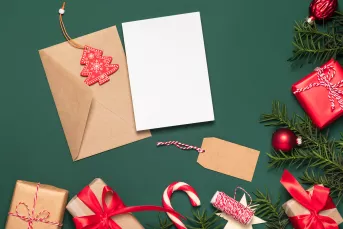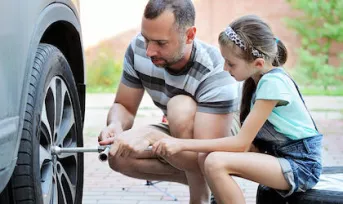
Starting a Garden on a Budget
This is the time of year when many of us start feeling the first signs of garden fever. But garden costs can add up quickly, leaving many of us to wonder if we should put off starting a garden until next year.
Not to worry! I’ve got low- and no-cost gardening ideas to share, from finding free gardening supplies to “shopping” in your home first to stretching your dollars at the garden center. By following these budget-friendly tips, you can plant a beautiful garden without breaking the bank.
How to set up a budget-friendly garden
When starting a garden from scratch, you don’t need to have it all figured out that first spring. Instead, you can start a small garden with the plan of expanding it in the future. If you’re working with a larger garden space, pick goals for this year and identify what can wait for next year.
Design a garden plan
Sketch out a basic design of your garden layout. You don’t need any artistic talents – just use simple shapes like circles, squares, rectangles, and lines for garden beds, plants, and paths. Remember to measure these areas and note those measurements in your plan.
Determine your garden budget
If you go to your favorite garden center without a clear plan, you’re almost guaranteed to overspend! Before you shop, set the maximum amount you can afford to spend on your garden this year and commit to it. You might even research supply costs online before visiting a garden center in person to give you a better idea of how much you can afford for each item.
Check local resources
You might be surprised to discover resources like online neighborhood marketplaces, tree care services, or city programs offer free or low-cost wood chip mulch or compost.
For example, some cities gather leaves in the fall to make compost and offer it to the public in the spring. Discovering your town has free compost days (Earth Day is a popular one) can free up room in your garden budget for other supplies.
Make your own compost
If you can’t source free compost, try making your own!
Depending on where you live, you could create a compost pile you turn manually with a pitchfork or similar garden tool. In smaller yards, you might use an enclosed composting bin designed to prevent odors and allow easy turning for breaking down compost. These bins are often an investment of around $50, but if you’re dedicated to making your own compost, it can help save money in the long run.
Create your own weed barrier
Old newspapers and cardboard boxes are ideal, biodegradable alternatives to pricy weed fabric. Simply spread the newspapers or cardboard around your plants and cover with mulch.
Repurpose old items and containers
Using household items and containers can create a more whimsical, artistic garden.
For example, an old ladder can become a vine trellis. You can repurpose an old chair or dresser drawer as a plant holder or planter box. Unused bookcases and cupboards can become plant shelves or potting stations, while old cookware can grow herbs or flowers.
You can even use wooden spoons as plant markers – your imagination is the limit! Just be mindful of how much you water plants in containers without drainage holes.
Install a DIY rain barrel
Speaking of water, gardens can do a number on your water bill. Why not make the most of the weather in your area with a rain barrel?
Rain barrels are containers that store rainwater, which you can then use for watering your garden. Pre-made rain barrels can be spendy, but they may pay for themselves quickly by keeping you from spending extra on your water bill.
Fortunately, DIY rain barrels are easy to make. If you’re handy, installing a DIY rain barrel can help keep your garden season water bill low.
How to get low-cost or free plants
So, now that you’ve planned your low-cost garden, you need to grow things in it. Here are some budget-friendly ways to get plants for your garden:
Plant swaps
If you’ve got any plants to trade, find a local plant swap. Your extra daisies could score you that hosta or ornamental grass you’ve had your eye on.
Start from seeds
Not only is starting plants from seed more affordable than buying plant starters, but you can grow plant varieties not available in local garden centers. Shop for seeds online or at local garden nurseries, home improvement stores, farmers’ markets, seed catalogs, and even community seed swaps!
Secondhand cuttings
If any of your friends or family members are gardeners, see if they can spare any cuttings or propagated plants. They might even be a great source of free secondhand garden tools.
Off-season markdowns
Buying plants in the bargain bin at the end of the season can pay off more than you might think. Just be sure you know how to tell the difference between plants beyond saving and ones that will bounce back and do well next year.
Divided perennials
Many perennials can be divided to make more plants, giving you more bang for your buck. Research which plants are okay to divide, the proper methods, and the time of year to divide.
Saved seeds
Plan ahead for next year’s garden by learning how to harvest and save this year’s seeds. A little extra work now will give you free plant starters next spring.
Plant a garden you (and your wallet) will love!
Planning and budgeting are your two most valuable gardening tools for creating a beautiful spring garden on a budget. I know I’ll be looking for free mulch and compost resources for my future gardens. Now, go forth and plant!
Notice: Information provided in this article is for informational purposes only. Consult your attorney or financial advisor about your financial circumstances.


